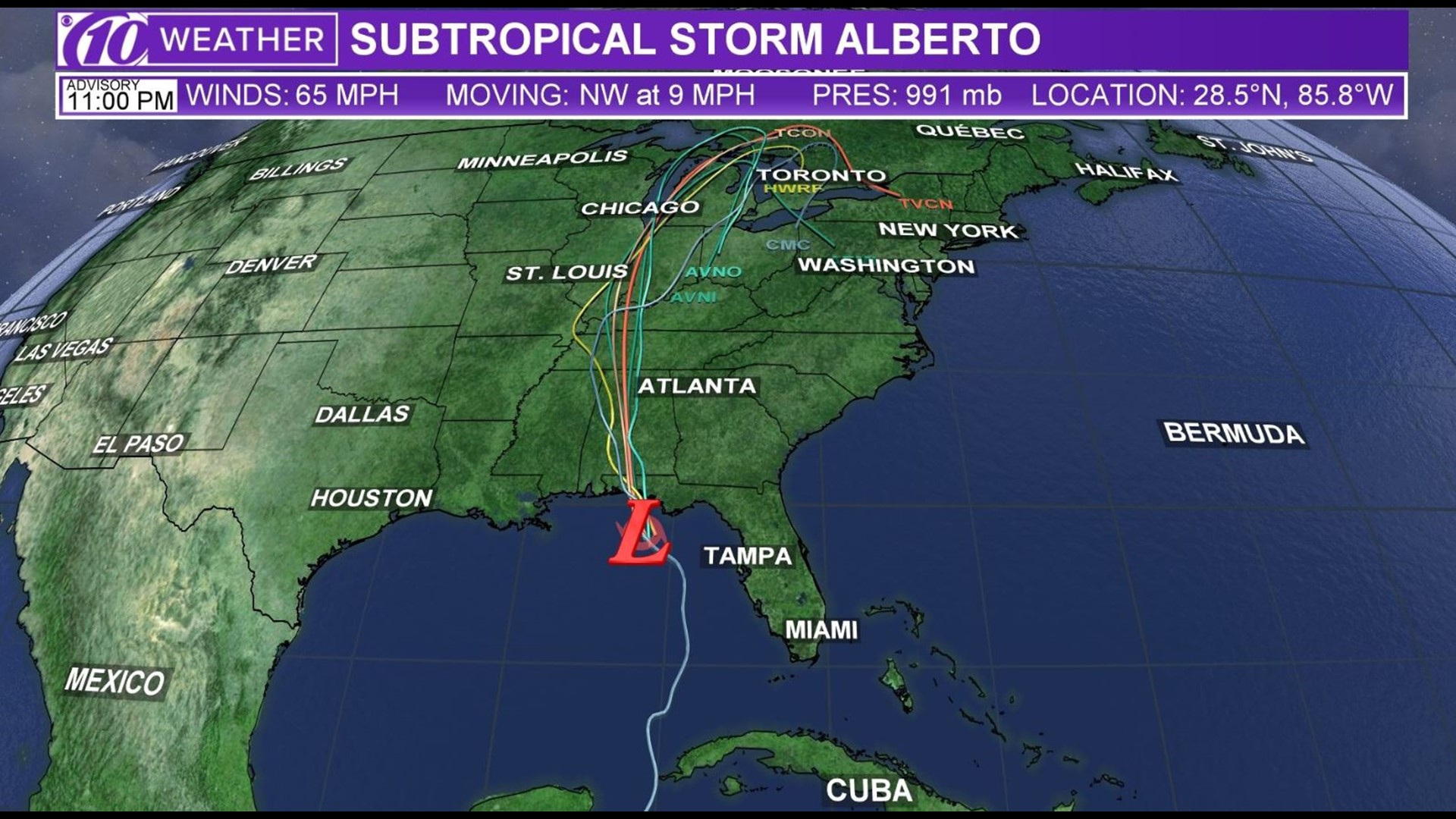
Tropical Storm Warning: Tropical storm conditions (sustained winds of 39 to 73 mph) are expected within your area within 36 hours.NHC issues a hurricane warning 36 hours in advance of tropical storm-force winds to give you time to complete your preparations. Hurricane Warning: Hurricane conditions (sustained winds of 74 mph or greater) are expected somewhere within the specified area.If you are under a storm surge warning, check for evacuation orders from your local officials. Storm Surge Warning: There is a danger of life-threatening inundation from rising water moving inland from the shoreline somewhere within the specified area.The difference between Tropical Storm and Hurricane Watches, Warnings, Advisories and Outlooks Warnings:Listen closely to instructions from local officials on TV, radio, cell phones or other computers for instructions from local officials. A Hurricane has max sustained winds of 74 mph or higher! Hurricane: Intense tropical weather system of strong thunderstorms with a well-defined surface circulation. Tropical Storm: Organized system of strong thunderstorms with a defined surface circulation and maximum sustained winds of 39-73 mph. Tropical Depression: Organized system of clouds and thunderstorms with defined surface circulation and max sustained winds of 38 mph or less. The Tropical Cyclones we track in the Atlantic basin are called Tropical Depressions, Tropical Storms and Hurricanes!Ītlantic Basin Tropical Cyclones are classified as follows: Depending upon location, tropical cyclones have different names around the world. It develops over tropical or subtropical waters, and has an organized circulation. Instead, Dorian jogged east of Puerto Rico and hit the northern Bahamas as a Category 5.The official Atlantic Basin Hurricane Season runs from June 1st to November 30th.Ī tropical cyclone is a warm-core, low pressure system without any “front” attached. 27 had Dorian scratching over Puerto Rico as a tropical storm and remaining near that intensity until it reached Florida on Sept. Hurricane Dorian ended with nearly average track errors, but early model confusion about where its center would form and move tripped up intensity forecasts. Fortunately, Sebastien didn’t affect any land.” “We were constantly picking the wrong solution. “We ended up with some of the biggest errors we had in 15 years and it really hurt our performance overall,” Cangialosi said.

More: El Niño may skip hurricane season, which could mean greater storm activity for Florida Sebastien remained stronger and taller than the models anticipated, resulting in a faster moving storm that outran the front. The models repeatedly misjudged Sebastien’s forward speed, which ultimately led to track errors that were up to 4.5 times greater than the five-year average for some time periods. 27.Īlthough Sebastien lasted more than five days as a tropical cyclone, the first six NHC forecasts predicted it would be absorbed by an approaching front within 72 hours, according to the post-mortem report on the system.

Its top wind speeds hit a ceiling of 65 mph before it fizzled hundreds of miles north-northwest of the Azores on Nov. 19 about 275 miles northeast of the Leeward Islands. One storm that dinged track forecast accuracy in 2019 was the mostly-unknown last cyclone of the season - Tropical Storm Sebastien. “In 2014 to 2015, there was an undetectable change in the cone. “You can absolutely have a season that has more track errors than the year before,” McNoldy said. Brian McNoldy, a senior research associate at University of Miami’s Rosenstiel School of Marine and Atmospheric Science, said the cone size shouldn’t be judged year to year, but on a longer time scale.


 0 kommentar(er)
0 kommentar(er)
